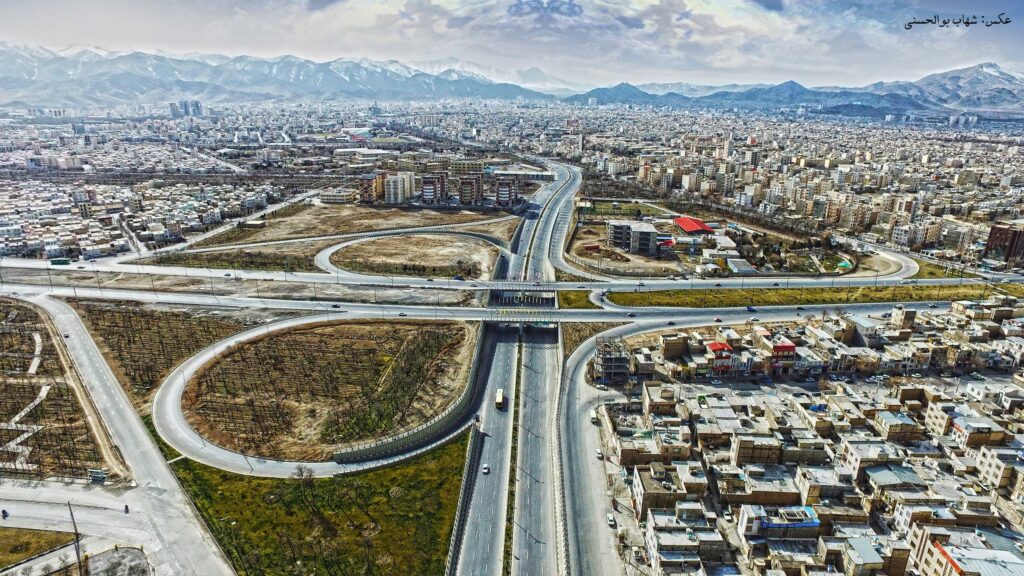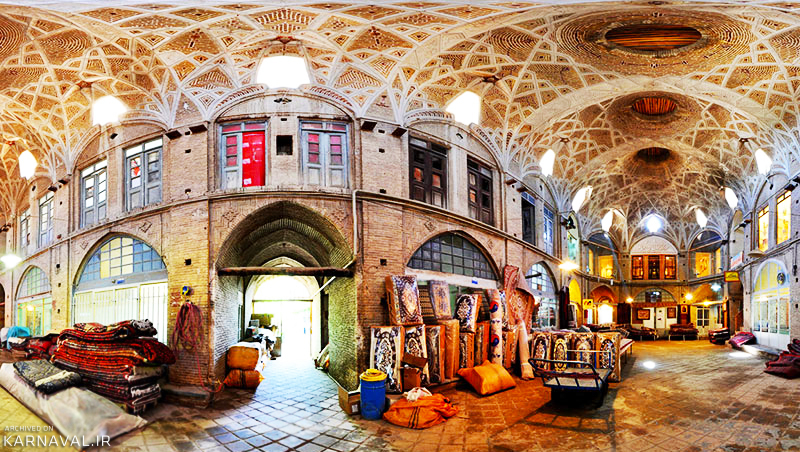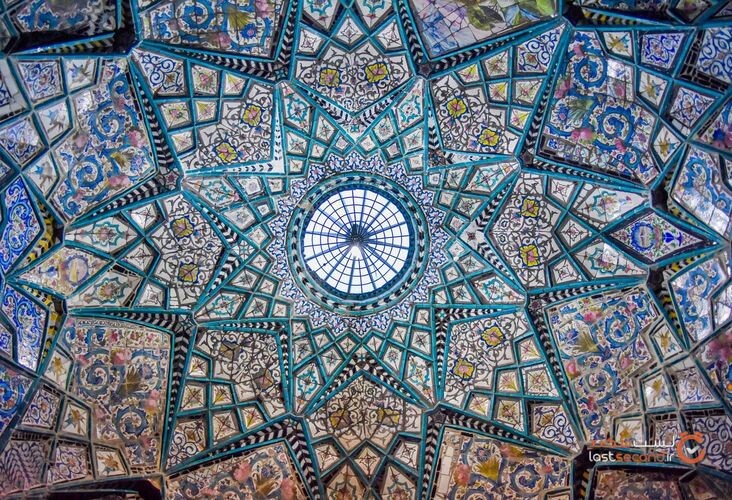About Arak
Geographical and Climatic Position
Arak is one of the most strategic and key cities in Iran, located in the heart of the country within Markazi Province. Historically, Arak has played an important role in Iran’s industry, culture, politics, and economy and is currently known as the “Industrial Capital of Iran.” Let’s explore Arak from various perspectives.
Arak County lies in the southwest of Tehran Province, about 288 kilometers away, and serves as the capital of Markazi Province. It borders Saveh to the north, Hamedan to the northwest, Malayer, Khomein, and Aligudarz to the west, Mahallat to the east, and Tafresh and Ashtian to the northeast. Arak covers an area of 7,178.98 square kilometers, constituting about 24.4% of the province’s total area.
Geographically, Arak is situated at 34°5′30″ N latitude and 49°41′30″ E longitude. The Arak plateau spans 5,400 square kilometers, with 2,400 square kilometers forming the elevated Arak plain and the rest consisting of surrounding mountains. The region’s main mountain range extends from the northwest to the south and then turns northeast, while a second parallel range stretches from south to north, widening in certain areas and even crossing the northwest part of the city.
Arak’s climate reflects the characteristics of Iran’s central plateau: cold, wet winters and hot, dry summers. The surrounding mountains, the Meyghan Salt Lake, and the Farahan plain all influence the local climate. In autumn and winter, western clouds release most of their moisture over the western highlands, particularly the Zagros Mountains. A cold front often settles in Arak during winter and, due to the surrounding elevation and pressure effects from Meyghan Lake, remains for an extended period.
The city experiences variable weather: winters last 4 to 6 months, while spring and autumn are brief. Summer mainly occurs during July and August. The number of frosty days varies between 65 and 120 annually. Rainfall ranges from 230 to 638 mm per year, with an average of about 300 mm.

A view of Arak
History
Compared to many Iranian cities, Arak is relatively young. It was founded during the Qajar era, just over two centuries ago. Initially named Sultanabad, it was renamed Arak in 1937. The city’s founder was Yusef Khan Gorji, known as Sepahdar, who built it over several years with a budget of 200,000 tomans.
The name “Arak” has been interpreted in various ways, including capital, orchard, palm grove, and township. Some suggest it derives from “Irak,” the Arabic form of “Iraq,” as central Iran was historically referred to as Iranestan or Iranak.
Economy and Industry
Arak’s central location and industrial base have made it a hub for both industrial and service activities. Carpet weaving is a notable traditional craft, especially the famous Sarouk carpets.
Arak ranks first in the variety of industrial products, second in heavy industry, and overall is considered Iran’s fourth industrial pole. It holds the title “Industrial Capital of Iran” due to its numerous mother industries, its role in producing 80% of the country’s energy equipment, the largest aluminum plant (IRALCO), and the largest sodium sulfate mine.
It also hosts:
Iran’s first aluminum plant (IRALCO)
The largest wagon and locomotive factory (Wagon Pars)
The first combine harvester plant (Iran Combine Manufacturing)
The Middle East’s largest power transmission tower manufacturer (Avangan)
The first power transmission tower test station in Asia
Iran’s first solar school
Arak was recognized as the country’s first green provincial capital after completing its gas distribution projects.
Agriculture and Livestock
Despite its industrial image, Arak has significant agricultural potential. Around 118,500 hectares of arable land yield approximately 402,492 tons of agricultural, horticultural, and livestock products annually. Key crops include wheat, barley, animal fodder, sugar beet, potatoes, grapes, peaches, apples, walnuts, and almonds. The livestock sector includes 128 poultry farms, 112 dairy farms, 416 calf-raising units, and 9 milk collection stations.
Culture and People
Arak is home to a culturally rich and hardworking population. Its ethnic composition is mainly Persian, though Lurs, Turks, Georgians, and others also live there. The primary language is Persian. Before the city’s foundation, various dialects such as Tati were spoken in surrounding areas like Vafs. After Arak’s establishment and subsequent migration, these dialects blended into a unique local speech that gradually faded with the rise of mass media. Today, most residents speak standard Persian with minimal accent. In outlying areas like Sanjan, Karahrud, and surrounding villages, older residents still speak the traditional dialects. Most inhabitants are Shia Muslims, with a small Christian minority.
Historical and Tourist Attractions
Historical Sites:
Arak Bazaar Complex: Built during Fath-Ali Shah Qajar’s reign, this bazaar features amenities like mosques, schools, and water reservoirs, arranged in a cross-shaped layout.
Four-Season Bathhouse: A beautiful Qajar-era structure with sections for men, women, and religious minorities. The dressing area is adorned with colorful tiles and now functions as a museum.
Sepahdar School: A Qajar-era school built by Yusef Khan Sepahdar, featuring Safavid architectural influences and Qajar-style tilework.
Pir Moradabad Shrine: Located in Moradabad village, 14 km northeast of Arak, originally built by Shapur II and later rebuilt during the Seljuk era.
Imamzadeh Mohammad Abed Shrine: A Safavid-era shrine for the son of Imam Musa al-Kadhim, situated 12 km north of Arak.
Borzuyeh Fire Temple (Rahgard): A Sassanid-era Zoroastrian temple built of brick and stone in Rahgard village, 65 km northeast of Arak.
Haj Vakeel Castle: A Qajar-era structure that once housed a major carpet workshop and the British consulate in Arak.

Arak Bazaar

Four-Season Bathhouse

Haj Vakeel Castle
Natural Attractions:
Chepeghli Spring: Located in the northern slopes of the “Bagh Bar Aftab” highlands, with therapeutic waters and scenic terraces.
Khosrow Spring (Sarab-e Hak): A large spring on the Rasvand Mountain foothills in the Kazzaz plain, known for its lush surroundings.
Sefidkhani Cave: Situated 18 km south of Arak in the Sefidkhani mountains, famous for its “genie chimney” and stalactite formations.
Anjedan Cave: Located 40 km southeast of Arak, between Khomein, Arak, and Mahallat, famous for its caves and historical sites.
Meyghan Lake/Desert: A salty lake/desert northeast of Arak in the Farahan plain, covering 100–110 square kilometers and hosting migratory birds in autumn and early winter.
Gerdoo Valley Tourist Area: A 100-hectare area south of Arak, designated a tourist site by the Iranian government in 2006.

Sefidkhani Cave

Meyghan Lake

Gerdoo Valley
Handicrafts and Souvenirs
Arak is known for its traditional crafts including:
Handwoven textiles (carpets, kilims, jajims)
Traditional embroidery
Woodwork (carving, marquetry, sculpture, turning)
Pottery and ceramics
Traditional calligraphy and painting
Metalwork (copper, engraving, filigree)
Traditional footwear (Giveh weaving and stitching)
Architectural decorations (plasterwork, mirror work)
Gemstone carving
Carpet weaving has deep roots in Arak, with Sarouk, Farahan, and Sarband rugs gaining global recognition. Under Yusef Khan Gorji’s patronage, carpets became a key export. At one time, Arak’s rugs rivaled those of Kerman. The Sarouk carpets are especially renowned for their durability, unique designs, and fine wool. Arak remained a major exporter until 1940. Local food souvenirs include baslogh, fatir bread, grape molasses, and grapes.
Transportation and Accessibility
Railway:
Arak has long been part of Iran’s north-south railway line, greatly aiding its development. The Arak Railway Administration covers a wide range from Sāqe Station in Qom to Momenabad in Lorestan and Malayer in Hamedan. The western railway line begins in Arak, connecting to Nahavand and Malayer, and then through Sahneh, Kermanshah, and Eslamabad-e Gharb to the Iraqi border at Khosravi. The Arak-Malayer line (90 km), opened in October 2011, is a major transit route. Arak-Isfahan rail construction has also begun. A local commuter train line between Arak and Mohajeran was approved in 2011.
Airport:
Arak has an international airport. Before 2013, it only served domestic, military, and mid-sized cargo flights. After the runway extension project, it became capable of handling large aircraft like the Airbus.
Road Network:
Arak’s location between the Caspian Sea and the Persian Gulf and along west-south transit corridors makes it a major national hub. The most important transit route is Freeway 5, though the stretch between Qom and Arak remains a highway. Plans are underway to upgrade this to a freeway. The Arak–Khorramabad freeway (150 km) is another key project aligned with completing Freeway 5.
Seismology and Geology
The Arak basin lies in a depression created by folded sedimentary rocks between volcanic and metamorphic mountain formations, mainly from the Zagros range.
Higher education
Arak hosts 25 higher education institutions, including public universities, Payam Noor, Islamic Azad, applied science centers, and a non-profit university. In 2011, it had over 50,000 students, with the largest share studying at Islamic Azad University. The city is a major academic hub in Iran, with key institutions like Arak University and Arak University of Medical Sciences.
Arak combines a proud industrial history with a knowledge-based future. Its strategic location, active industries, and universities make it well-positioned for sustainable development. Investment, tourism, innovation, and livability are key priorities for the city’s future.
